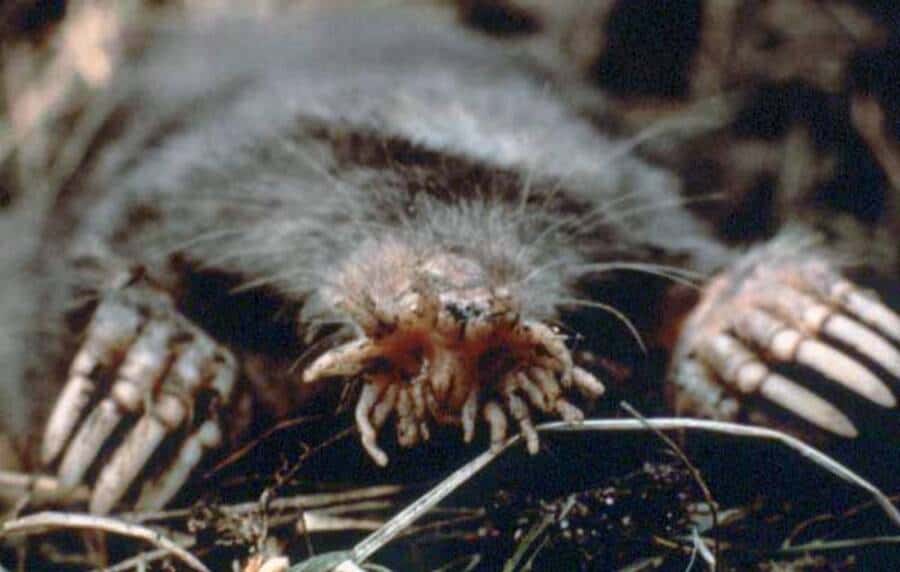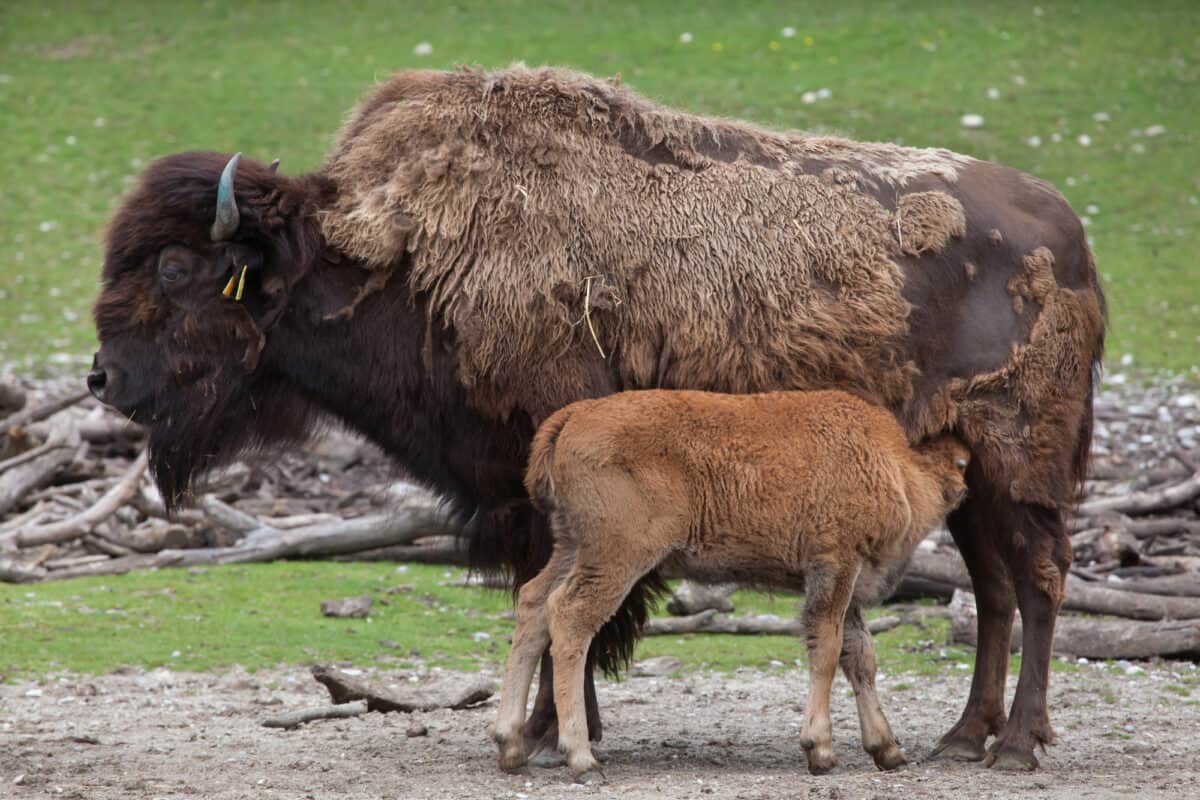America is home to many wildlife, from majestic creatures like the bald eagle to the elusive lynx. However, some truly bizarre and fascinating animals are hidden among the more recognizable species that rarely see the spotlight. These unique creatures boast unusual characteristics and adaptations that make them stand out in the natural world, and learning about them offers us a deeper appreciation for the richness of America’s biodiversity. In this article, we will explore ten of America’s strangest animals, revealing the extraordinary array of life that calls this continent home.
The Star-Nosed Mole Nature’s Unusual Underground Dweller

The star-nosed mole, found primarily in the wet lowland areas of North America, is a creature like no other. Its most striking feature is its twenty-two fleshy appendages surrounding its nose, which are used for tactile sensation and spatial awareness. These appendages make the mole the fastest-eating mammal on the planet, able to identify and consume food in milliseconds. Adapted to life underground, the star-nosed mole plays an essential role in aerating the soil, making it a key species for environmental health.
Axolotl The Salamander With a Never-Ending Youth

The axolotl, often referred to as the Mexican walking fish, is not a fish but a type of salamander. These captivating creatures are known for their remarkable ability to retain larval features throughout their lives, a phenomenon known as neoteny. Found naturally in the water canals of Mexico City, axolotls have fascinated scientists for years due to their powerful regenerative abilities, capable of regrowing entire limbs without scarring. Despite being a popular pet because of their enigmatic appearance, wild axolotls are critically endangered due to urbanization and pollution in their natural habitat.
Black Swallowtail Caterpillar A Living Chemical Arsenal

While a black swallowtail butterfly is a sight to behold, its caterpillar form carries a unique defense mechanism. Found throughout the eastern United States, this caterpillar displays vibrant green and black striping, complete with a pair of vivid eyespots. When threatened, it employs a snake-like hissing noise and emits a foul odor from an orange, forked organ known as an osmeterium. This organ secretes chemical compounds that ward off predators, making the caterpillar a fascinating example of evolutionary adaptation.
Rosy Maple Moth A Cotton Candy-Colored Marvel

Resembling a confectionery delight, the rosy maple moth is a striking inhabitant of North America’s deciduous forests. Known for its pastel hues of pink, yellow, and lavender, this moth stands out against the typical browns and greens of the forest floor. Despite its vibrant coloration, the rosy maple moth’s small size and preference for resting beneath the leaves of maples provide it with relative safety from predators. It’s a testament to the diversity of moth species and the surprising beauty that can be found within them.
Porcupine Caribou The Arctic’s Seasonal Migrant

The porcupine caribou, named not for any relation to the porcupine but after Alaska’s Porcupine River, is among the most formidable travelers in the animal kingdom. With migration routes spanning over 1,500 miles, these caribou undertake one of the longest land migrations of any animal on Earth, journeying through diverse terrains from the Arctic tundra to boreal forests. Their journey is crucial for the ecosystem, as it influences plant growth patterns and supports the traditional lifestyles of Indigenous peoples in the region.
Red Panda The Misleading Name

While often overshadowed by its namesake, the red panda is a remarkable creature in its own right. Found primarily in the eastern Himalayas and parts of China, this small mammal is more closely related to raccoons and weasels than to the giant panda. Red pandas possess a pseudo-thumb, an extended wrist bone that aids in grasping bamboo, their primary diet. Despite its adorable appearance and agile tree-climbing skills, the red panda faces threats from habitat loss, making conservation efforts critical for its survival.
North American Wood Bison The Comeback Kid

A subspecies of the American bison, the North American wood bison represents a conservation success story. Once on the brink of extinction due to overhunting and habitat loss, dedicated conservation initiatives and careful management have allowed their populations to rebound. Larger and more robust than its plains counterpart, the wood bison plays a vital role in maintaining the open boreal landscapes of Canada and Alaska, influencing plant communities and competing with other herbivores for resources.
Grunion Timing is Everything

Along the shores of the Pacific, from northern California to Baja California in Mexico, a small fish known as the grunion puts on a natural spectacle unlike any other. During specific high tides, thousands of these silvery fish beach themselves in a synchronized mating ritual. Females lay their eggs in the sand, while males fertilize them before returning to the ocean. The timing of the grunion’s run is so precise that it often draws crowds of onlookers who brave the night to witness this mesmerizing event.
Virginia Opossum The Marsupial Master of America

While marsupials are commonly associated with Australia, North America has its native marsupial: the Virginia opossum. Recognized for its “playing dead” survival tactic, also known as thanatosis, the opossum is a resilient and adaptable creature. With a prehensile tail, a knack for tree-climbing, and an immune system capable of fending off snake venom, the Virginia opossum efficiently scavenges in urban and wild areas. Its unsophisticated charm and adaptability make it a fascinating member of America’s wildlife community.
Conclusion: Celebrating America’s Remarkable Wildlife

America’s wildlife is as diverse as its landscapes, offering an abundance of unusual and incredible animals that reveal the wondrous complexity of the natural world. From the mighty wood bison to the ethereal rosy maple moth and the resilient Virginia opossum, each species demonstrates unique adaptations that allow them to thrive in their respective habitats. By understanding and appreciating these remarkable creatures, we can advocate for their protection and ensure that future generations continue to witness the strange and wonderful wildlife that inhabits our extraordinary planet.
- 8 Times Animals Helped Solve Crimes in the Most Unexpected Ways - August 20, 2025
- 10 Stunning Animals You Can See in the Great Barrier Reef - August 20, 2025
- 14 Loudest Birds in the U.S. - August 20, 2025

